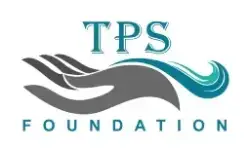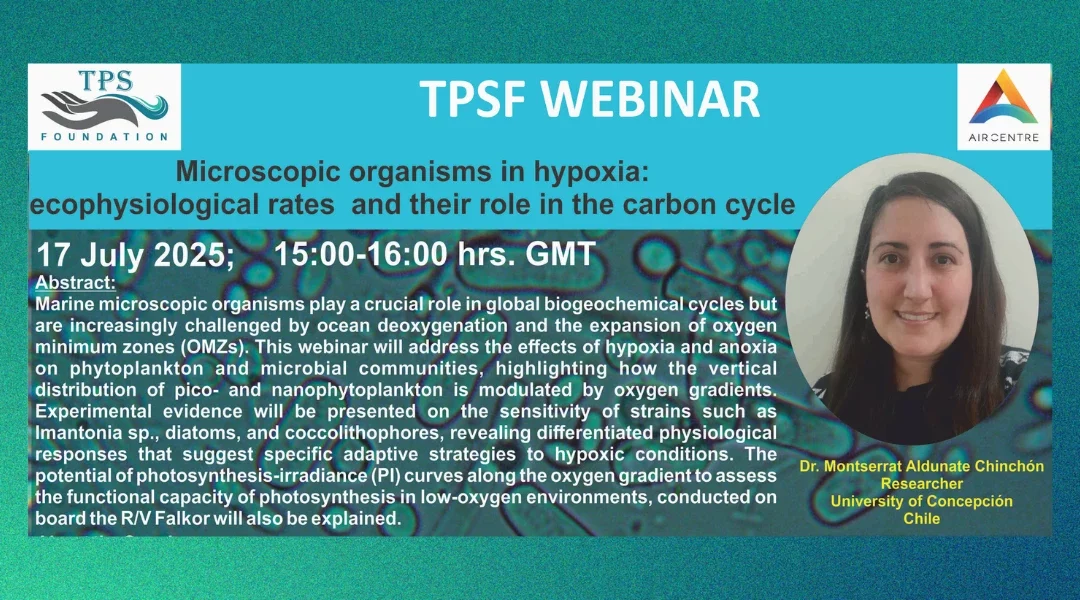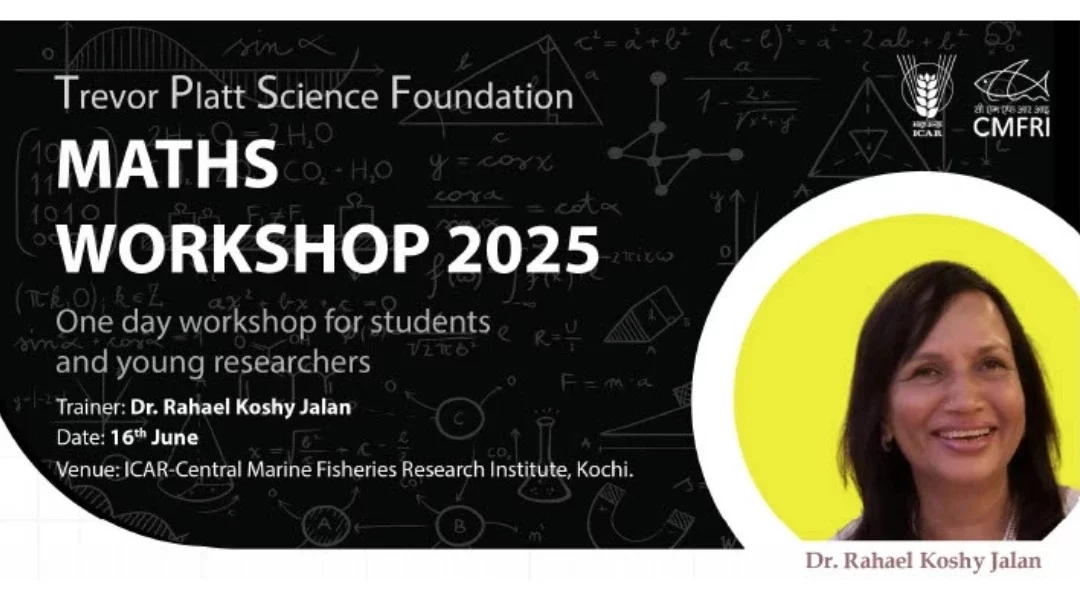A report from NERCI
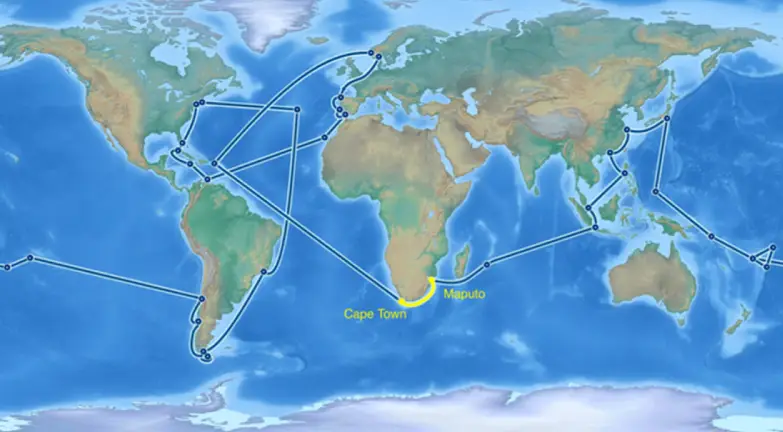
The One Ocean Expedition Route for its 20-month-long circumnavigation of the globe.
The Nansen Environmental and Remote Sensing Center (NERSC), Bergen, Norway and the European Space Agency (ESA) jointly organized an advanced ocean synergy training course as part of the Partnership for Education and Cooperation in Operational Oceanography (PECO2) project. The course was conducted on board the Norwegian tall ship Statsraad Lehmkuhl as it sailed from Maputo, Mozambique, to Cape Town, South Africa on 3-13 January 2023, as part of the One Ocean Expedition. The training was designed to support marine services specifically tailored to the regional environmental and climate change needs of the oceans around southern Africa. The course focused on studying various aspects such as air-sea interaction, ocean current dynamics, heat transport from the Indian Ocean to the South Atlantic Ocean, upper layer marine biology, and distribution and concentration of pollutants, while sailing along the Agulhas Current, the world’s strongest ocean current.
This voyage is recognized by the UN Decade of Ocean Sciences, and a part of the “Partnership for Education and Cooperation in Operational Oceanography” (PECO2) project that includes partners from South Africa, China, France, India, and Norway, led by Dr. Johnny Johannessen, NERSC. One part of this training course was conducted online from September to December 2022, structuring one lecture per week, focusing on the Earth observation satellites and their enormous applications in oceanography, educating the early career ocean professionals to innovate further and expand the vision of operational oceanography from space. The second part was a ship-based component onboard the tall ship Stastraad Lehmkuhl during the leg of the One Ocean expedition from Maputo, Mozambique, to Cape Town, South Africa, which is around 1335 nautical miles and was covered in 10 days.
The Historic Sailing Ship “Statsraad Lehmkuhl”
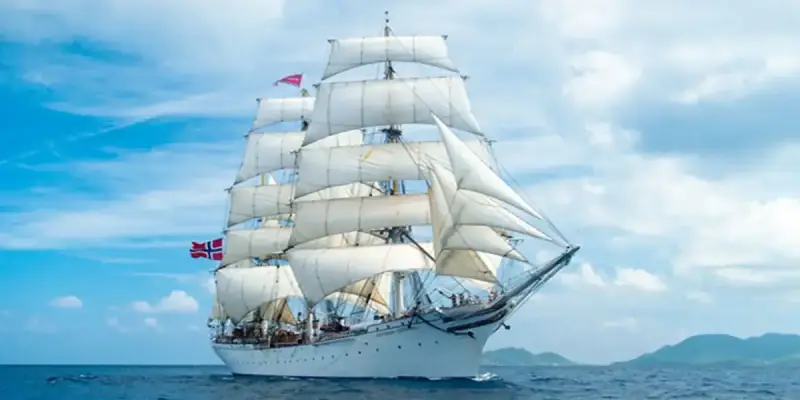
Statsraad Lehmkuhl. Credits: Susanne Njølstad Skandsen
The Statsraad Lehmkuhl is a square-rigged ship that is operational all year round and is considered one of the largest, oldest, and most attractive ships of its kind worldwide. Originally constructed in 1914 as a training ship for the German merchant fleet, it has been sailing under the Norwegian flag for more than a century. Despite its age of 108 years, the ship is in excellent condition and has recently completed its first-ever circumnavigation of the globe as part of the One Ocean Expedition. With its 22 sails, it can reach a speed of 17 knots and can travel at 11 knots using its diesel engine. The ship is also equipped with a desalination plant that operates on reverse osmosis technology to provide fresh water while at sea.
Additionally, the ship has various oceanographic instruments that enabled dedicated measurements while on passage, including sea surface temperature, pCO2, fluorescence, turbidity, oxygen, salinity, waves, meteorological variables, CTD casts, and net sampling. These measurements allowed for the monitoring of fundamental upper ocean features and their linkages to satellite data.
The Participants
The training course for the One Ocean Expedition was free of charge for participating students, who were also provided with economy class tickets for travel to and from Mozambique and South Africa, as well as free accommodation on the Statsraad Lehmkuhl. The European Space Agency sponsored 20 students from their member states to attend the training, and up to 40 students and Post Docs were sponsored under the PECO2 project. Four participants from India led by Dr. K. Ajith Joseph, Principal Scientist & Executive Director of Nansen Environmental Research Centre (India) including Dr. Sreelakshmi S from INCOIS, Mr. Ullas M Pillai and Mr. Akash S from NERCI participated in the training. In addition to student participants, the crew from 30 countries, including high school students, teachers, researchers/scientists, police officers, doctors, entrepreneurs, and others, also participated.
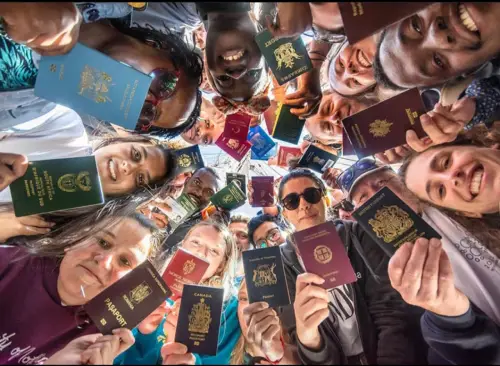
Participants from different countries. Credits: Susanne Njølstad Skandsen
The expedition also included delegations from various organizations and institutions such as the Norwegian Meteorological Institute, Nansen centers in Norway and South Africa, IFREMER (France), and TUDelft (Netherlands), among others. Dr. Tore Furevik (Director, NERSC), Mr. Haakon Vatle (Director and leader, One Ocean Expeditions), Prof. Johnny Johannessen, Lasse H. Pettersson and Annette Samuelsen (NERSC), Dr. Craig Donlon (ESA, Netherlands), Dr. Fabrice Collard, (President OceanDataLab, France), Dr. Lucile Guatier (OceanDataLab, France), Dr. Marie Helene Rio (ESA, Italy), Dr. Björn Backeberg (Senior Researcher at Deltares), Prof. Mathieu Rouault (University of Cape Town), Oyvind Breivik (Head of Division for Oceanography and Marine Meteorology, Norwegian Meteorological Institute) were a few of them.
The sailing route and the Agulhas Current
The western part of the Indian Ocean is home to the potent Agulhas current, which flows southward from Madagascar along the coast of Africa. Despite its narrow width of just 30 kilometres, it is among the world’s most dominant ocean currents.
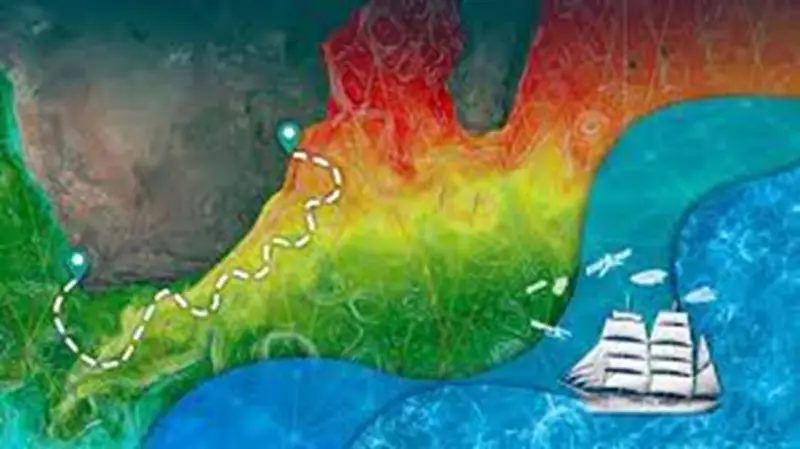
The Agulhas current has a meandering path, resulting in the formation of eddies when some of its meanders break off from the main current. Natal pulses, which occur several times each year, are massive eddies that emerge when these meanders grow in size.
Near the southern tip of Africa, the Agulhas current swings into the open sea, causing the emergence of massive eddies. The southern tip of South Africa is where the collision between cold water from the Atlantic and warm water from the Indian Ocean occurs. This interaction causes the upwelling of nutrient-rich water from the deep ocean towards the surface, providing a favourable environment for phytoplankton to flourish in the sunlight. This, in turn, becomes a source of food for other marine organisms like zooplankton and fish. Therefore, the region is of great significance for scientific exploration.
Research and Activities Onboard
On the evening of January 2nd, all members of the expedition departed from Maputo Port. The student participants and supervisors were divided into three primary research groups based on their fields of interest: Air-Sea interaction, Ocean dynamics, and Marine biology. To ensure the students could work independently on their preferred topic, each group was further divided into subgroups. All the results were then consolidated into a single report. The ship stopped at various stations along the way, enabling the students to gather data from the ocean, including temperature, salinity, density, plankton, and chemical conditions. The researchers collected plankton and water samples from both surface and deep ocean levels. They also measured the velocity and direction of the current, as well as the size, speed, and direction of the waves. Furthermore, they examined the relationship between the sea, wind, and precipitation. The Air-Sea interaction group used instruments like drones and fishing buoys to measure the sea state at each station. In addition, the scientists deployed wave-buoys, which are compact boxes equipped with instruments that record their movements and location in the ocean. They released one wave-buoy on the shelf, two in the Agulhas current’s core, and two between two eddies. Dr. Fabrice and Dr. Lucile, the expert team from OceanDataLab, France, worked onboard to continuously gather and process various datasets, including satellite data, onboard data, in-situ data, and multi observation analysis data. They made these datasets available to everyone on board for use in the research.
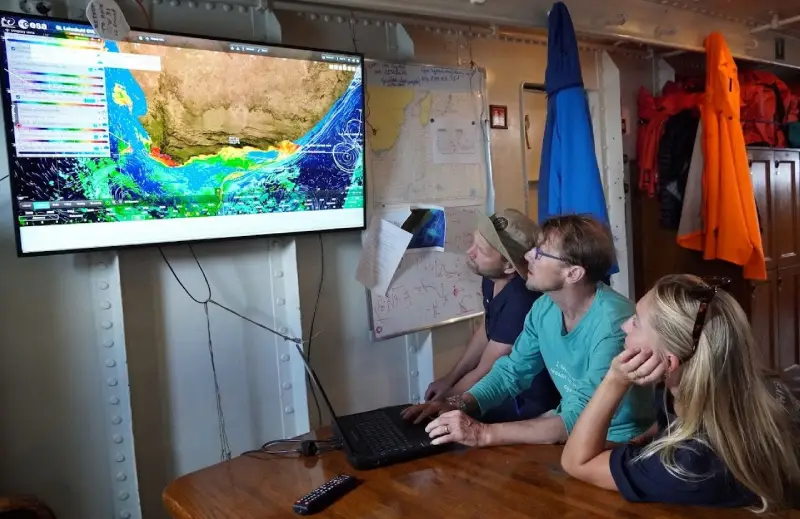
Lecture
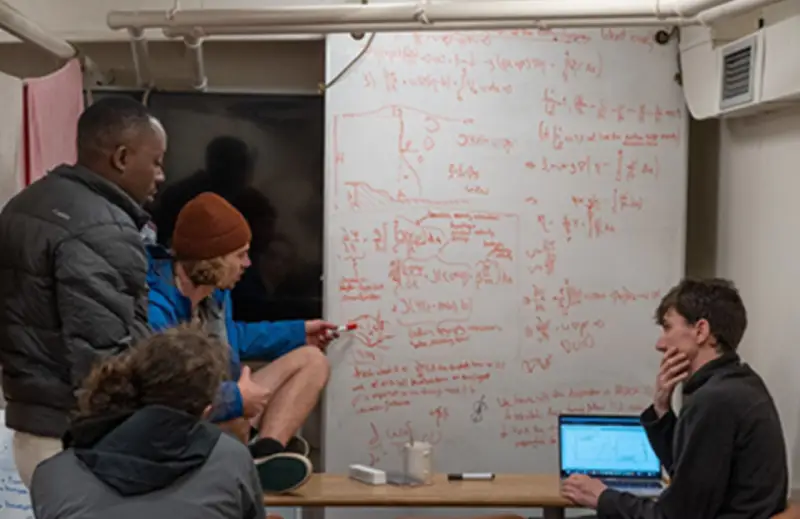
Lecture
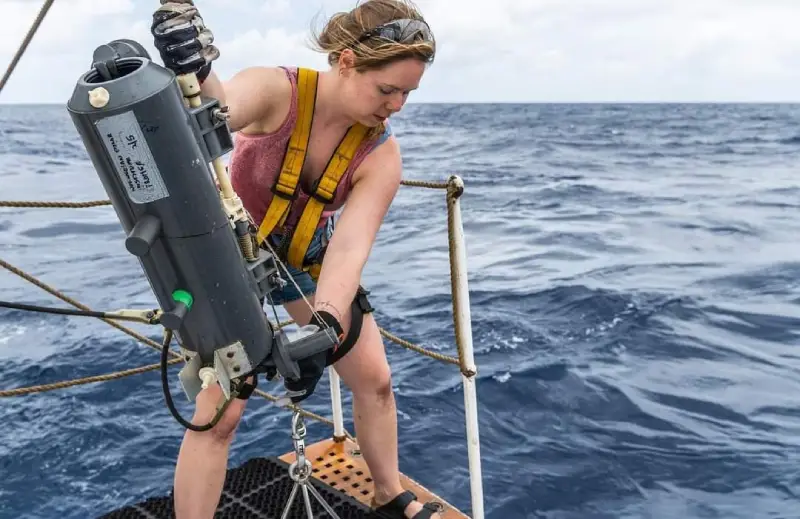
Sampling
Credits: Susanne Njølstad Skandsen
Besides the research, the voyage was remarkable for the various activities that took place on board, which helped to ease the tension and keep everyone excited. The crew members were divided into three watches, namely the Red watch, White watch, and Blue watch, based on their research groups. Each watch had specific duties assigned to them according to their working hours, which were from 12-4 for Red watch, 4-8 for White watch, and 8-12 for Blue watch. During these hours, trainees participated in activities such as pulling ropes, holding, tying, climbing masts, and furling sails. Additionally, each group member had various responsibilities, including Buoy watch, Helm watch, Fire watch, and Look-Out watch, which made the training experience exceptional. The participation of the trainees, along with the encouragement and leadership of Captain Jens Joachim Hiorth and his crew members, made the voyage unforgettable. Furthermore, the shanty songs performed by Mr. Haakon Vatle, the leader of One Ocean Expedition and CEO of the foundation of Statsraad Lehmkuhl, added to the memorable experience.
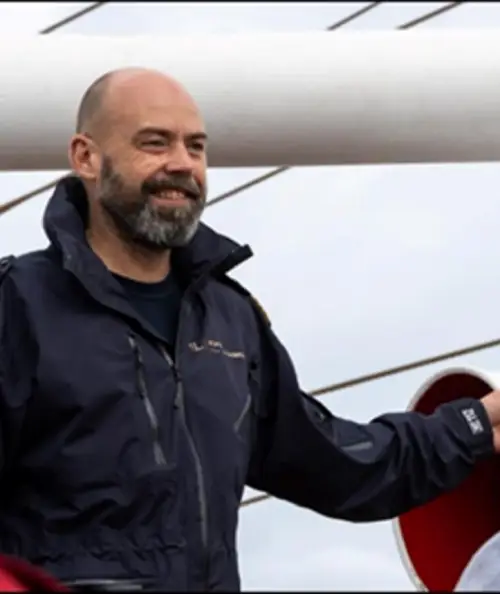
Captain Jens Joachim
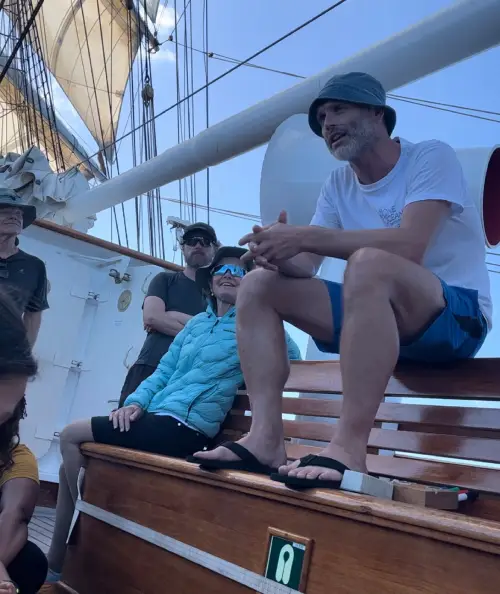
Mr. Haakon Vatle
(Director, One Ocean Expeditions)
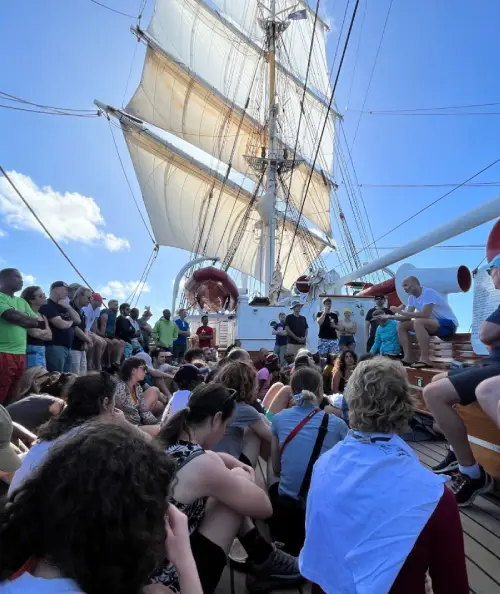
Gathering on the main deck
Credits: Susanne Njølstad Skandsen
Testimonial by Akash S, Research Scholar (NERCI)
“One morning, we experienced the worst storm conditions during the “White watch mustering.” I was on buoy watch duty at the rear end of the ship, and let me tell you, it was wild! The ship tilted so much that I almost touched the sea. I thought I was going to get swept overboard like a bag of chips in a gust of wind. Despite the chaos, I learned a lot about the strength of the Agulhas current and climate of the region closely. And the “watches” were pretty enjoyable, especially the “Helm watch.” It was like playing a video game, but with a massive ship, and instead of a controller, you use a massive steering wheel. Rotating the steering wheel and maintaining the ship’s course with precision and accuracy was no easy feat. But when you got it right, you felt like a true captain of the sea. It was like being the captain of a pirate ship, but without the actual piracy part.
We had to set the sails many times during the voyage, and that involved going aloft. It was a workout for sure, but with the harness safety, it was pretty exhilarating.
I know some people get seasick on voyages like these, but not me! (wink) I felt like I was born to do this – swaying with the waves, feeling the wind in my hair, and seeing the vastness of the ocean. It was like I had found my calling as a sailor.
Overall, it was an adventure of a lifetime, full of funny moments, and unexpected challenges. I made lifelong friends from different backgrounds and countries, and we bonded over our shared fear of getting swept away into the ocean.”
